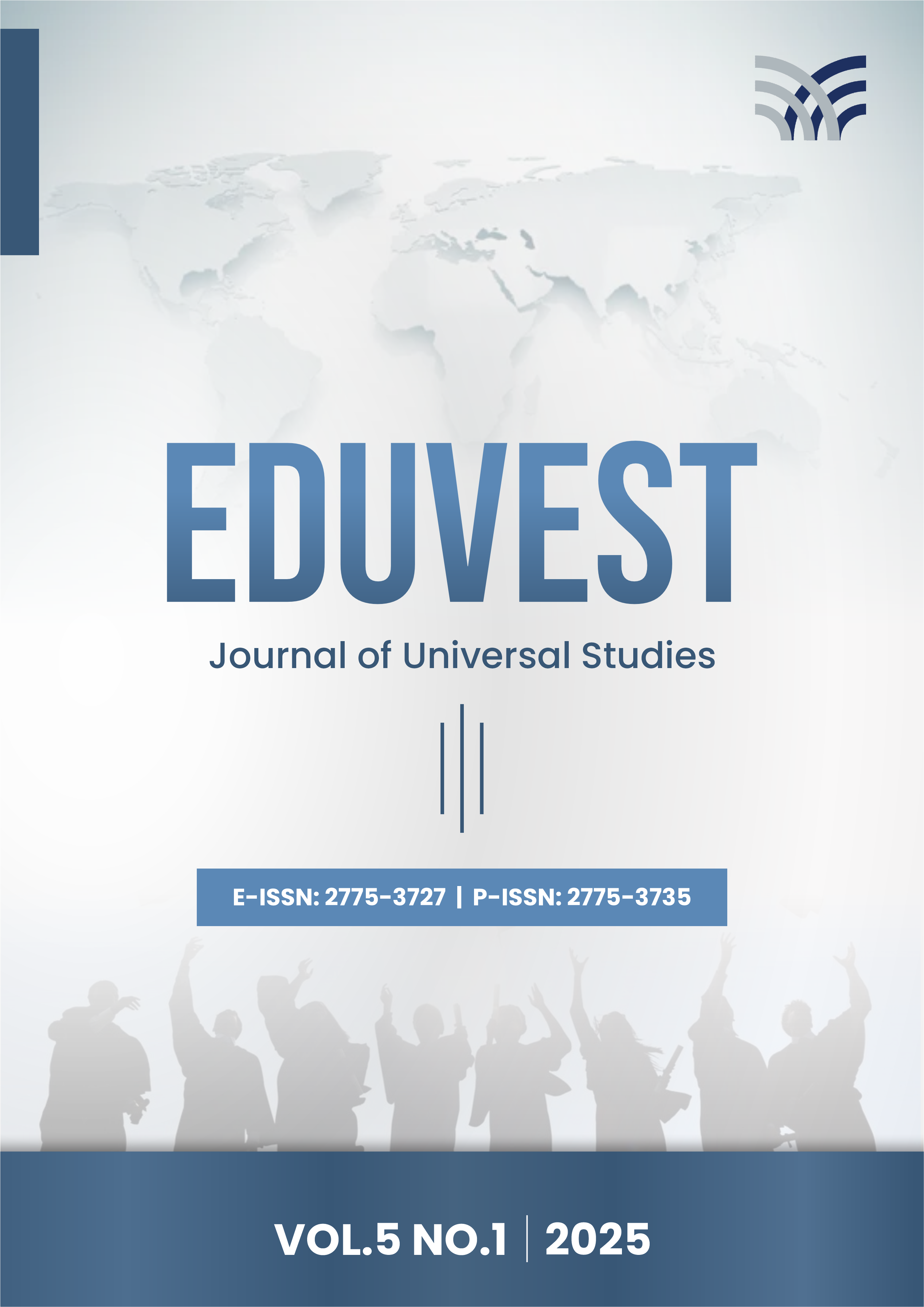Interactive Content for High School Students in Bali with a Multimedia Graphic Design Approach
##semicolon##
https://doi.org/10.59188/eduvest.v5i1.1556##semicolon##
Innovation##common.commaListSeparator## Multimedia Graphic Design##common.commaListSeparator## Interactive Content##common.commaListSeparator## Education##common.commaListSeparator## Learning EngagementAbstrakt
Education in the digital age faces significant challenges in delivering informative and engaging material to students. In Indonesia, particularly in Bali, many high schools are working to integrate technology into the curriculum to improve student engagement and learning quality. One popular tool used is Canva, a graphic design platform that allows users to easily create engaging visual content. This research aims to explore innovations in multimedia graphic design with a focus on the use of the Canva design tool and its impact in interactive content development for high school students in Bali. Qualitative research methods were used to conduct a case study of Canva's implementation in the creation of interactive content for online learning in several high schools in Bali. The results show that the use of Canva as a multimedia graphic design tool makes a positive contribution in creating interactive content that is interesting and easily understood by students. The findings show Canva's great potential in supporting multimedia graphic design innovation in educational contexts, as well as addressing student engagement issues and making it easier for teachers to present interesting and interactive materials.
##submission.citations##
Abidin, A. M. (2019). Kreativitas guru menggunakan model pembelajaran dalam meningkatkan hasil belajar siswa. Didaktika: Jurnal Kependidikan, 11(2), 225–238.
Arifin, Z., Tegeh, I. M., & Sukmana, A. I. W. I. Y. (2021). Independent Learning through Interactive Multimedia Based on Problem Based Learning. Jurnal Edutech Undiksha, 9(2), 244–253.
Bukhori, P. S., Hidayat, A., & Ilyas, I. (2017). Efektivitas Penggunaan Media Sosial Line Messenger Terhadap Motivasi Belajar Siswa. Jurnal Pendidikan Dan Pembelajaran Ekonomi Akuntansi, 3(2).
Clark, R. C., & Lyons, C. (2018). Graphics for learning: Proven guidelines for planning, designing, and evaluating visuals in training materials. John Wiley & Sons.
Clark, R. C., & Mayer, R. E. (2023). E-learning and the science of instruction: Proven guidelines for consumers and designers of multimedia learning. john Wiley & sons.
Johnson, R. D., & Mayer, R. E. (2020). The Effectiveness of Multimedia Learn-ing Tools in Education. Educational Psychology Review, 32(2), 245-267.
Kustandi, C., Farhan, M., Zianadezdha, A., & Fitri, A. K. (2021). Pemanfaatan Media Visual dalam tercapainya tujuan pembelajaran. Akademika, 10(02), 291–299.
Nurfasha, S. R. (2021). Kreativitas Guru Ditengah Keterbatasan Sarana dan Prasarana Pendidikan.
Rahman, A. (2020). Implementasi Teknologi Pendidikan di Indonesia: Tantangan dan Peluang. Yogyakarta: Pustaka Pelajar.
Suartama, I. K., Setyosari, P., & Ulfa, S. (2019). Development of an instructional design model for mobile blended learning in higher education. International Journal of Emerging Technologies in Learning, 14(16).
Terry, W. S. (2017). Learning and memory: Basic principles, processes, and procedures. Routledge.
Yulianingsih, T. (2018). Platform Pembelajaran Digital: Meningkatkan Efektivi-tas Pembelajaran. Journal of Educational Technology, 14(3), 120-132.
##submission.downloads##
Publikované
##submission.howToCite##
Číslo
Sekcia
##submission.license##
##submission.copyrightStatement##
##submission.license.cc.by-sa4.footer##










